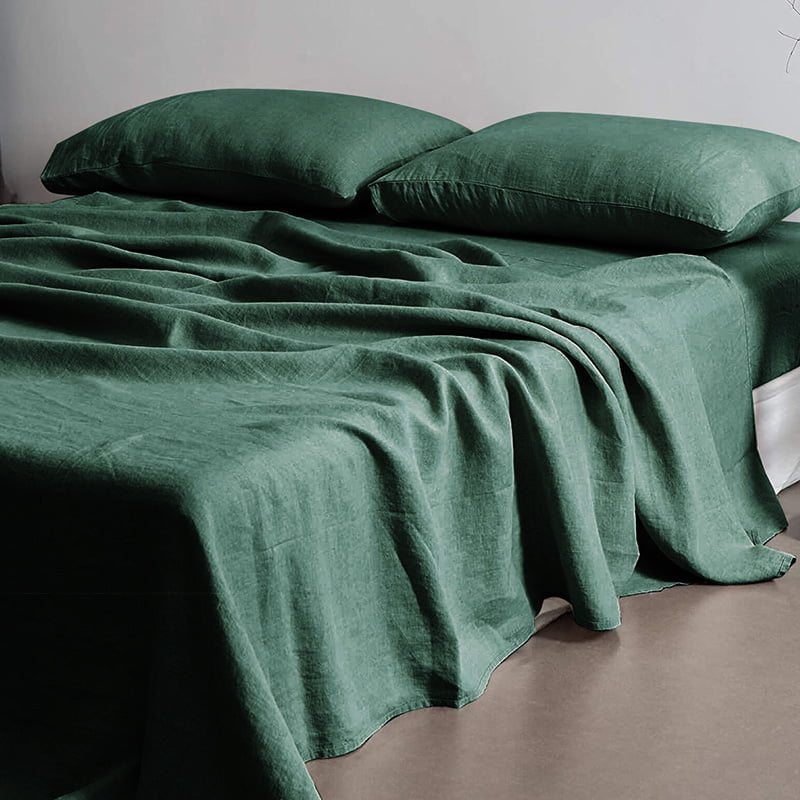Bamboo home textiles differ significantly from traditional textile products in several aspects. Below is a detailed analysis of these differences:
Material and Source
Bamboo home Textiles:Primary Material: Mainly made from bamboo fiber, which is a natural fiber extracted from bamboo.Source: Bamboo is a fast-growing renewable resource that requires minimal use of fertilizers, pesticides, and additional irrigation during cultivation, reducing pressure on land resources.Environmental Friendliness: Bamboo has a short growth cycle, maturing in 2-3 years, and can be sustainably harvested over long periods after a single planting, making it highly renewable and environmentally friendly.
Traditional Textile Products:Primary Material: Materials like cotton, linen, silk, and polyester, which may involve significant use of fertilizers, pesticides, and water resources during cultivation or production.Source: Traditional textile materials have diverse sources, but some may not be as renewable or environmentally friendly as bamboo fiber.
Performance Characteristics
Bamboo home Textiles:Breathability and Moisture Absorption: The dense, soft structure of bamboo fiber provides excellent breathability and moisture absorption, effectively wicking away sweat, preventing dampness, and keeping the wearer dry.Antibacterial Properties: Bamboo naturally contains a substance called "bamboo quinone," giving bamboo fiber products unique antibacterial properties that inhibit bacterial growth and promote health.Mite, Odor, and Insect Resistance: The antibacterial properties of bamboo fiber also endow it with resistance to mites, odors, and insects, making bamboo home textiles more hygienic and health-conscious during use.
Traditional Textile Products:Breathability and Moisture Absorption: The breathability and moisture absorption of traditional textile products vary depending on the material, but they may not match the performance of bamboo fiber products overall.Antibacterial Properties: Some traditional textiles may enhance antibacterial performance by adding chemical agents, which could have potential health implications.Mite, Odor, and Insect Resistance: Traditional textiles may perform less effectively in these areas, requiring regular cleaning and replacement to maintain hygiene.
Appearance and Design
Bamboo home Textiles:Texture and Sheen: The structure of bamboo fiber imparts a unique luster and texture to the surface, making these products not only functional but also aesthetically pleasing.Design Style: Designers can combine bamboo fiber with other materials to create a wide range of design styles, catering to diverse consumer tastes.

Traditional Textile Products:Texture and Sheen: The texture and sheen of traditional textiles vary by material, but they may not be as distinctive as those of bamboo fiber products.Design Style: Traditional textiles offer a variety of design styles but may focus more on traditional elements and classic designs.
Price and Value for Money
Bamboo home Textiles:Price: The extraction and processing of bamboo fiber are relatively complex, and its unique properties contribute to a higher cost, making bamboo home textiles slightly more expensive than some traditional textiles.Value for Money: Considering the environmental benefits, antibacterial properties, and breathability of bamboo home textiles, they offer good value for money.
Traditional Textile Products:Price: The price of traditional textiles varies depending on material and craftsmanship, but they are generally more affordable.Value for Money: The value for money of traditional textiles varies by product, with some offering good durability and comfort.
Bamboo home textiles differ significantly from traditional textile products in material and source, performance characteristics, appearance and design, and price and value for money. With their unique advantages in environmental sustainability, antibacterial properties, and breathability, bamboo home textiles are increasingly favored by consumers.



 English
English Español
Español عربى
عربى







 +86-159 5050 0822
+86-159 5050 0822 peter@rainbowhomefashion.com
peter@rainbowhomefashion.com No.199 Yimin Road, Dateng DIstrIct, Yancheng City. Jiangsu Province, China
No.199 Yimin Road, Dateng DIstrIct, Yancheng City. Jiangsu Province, China
